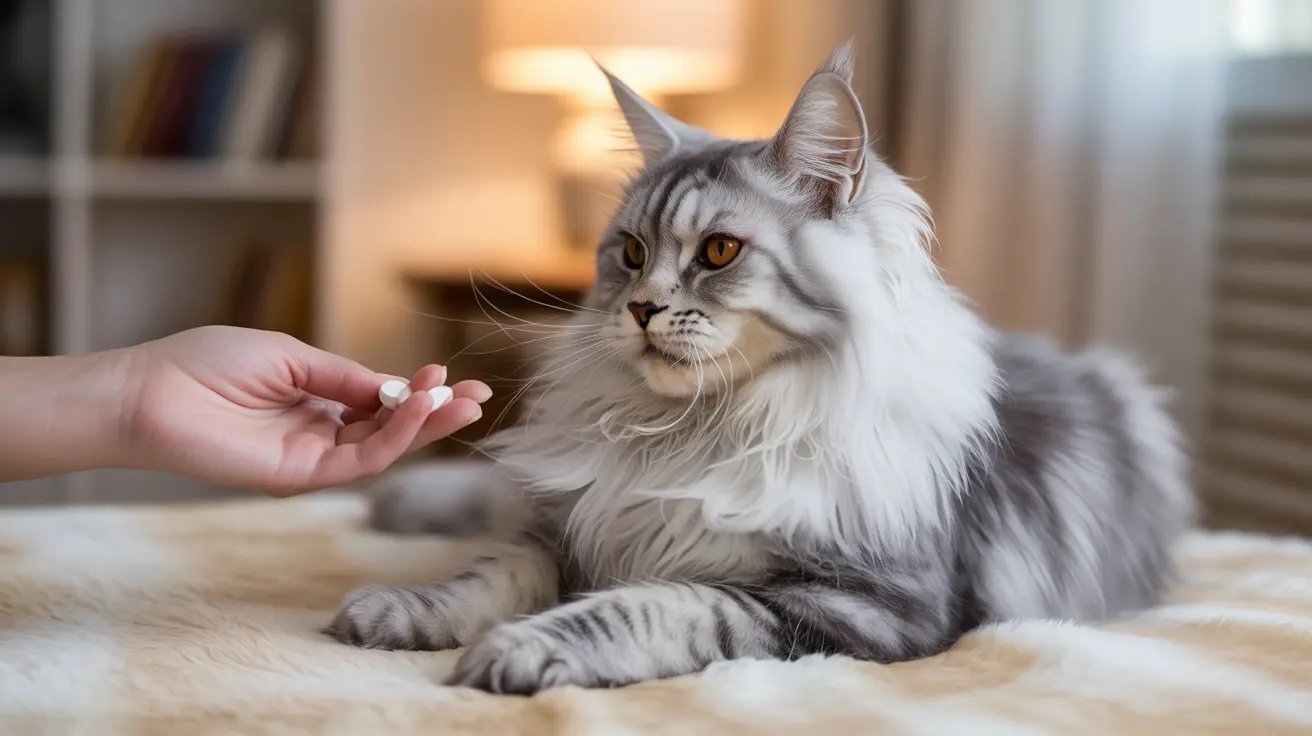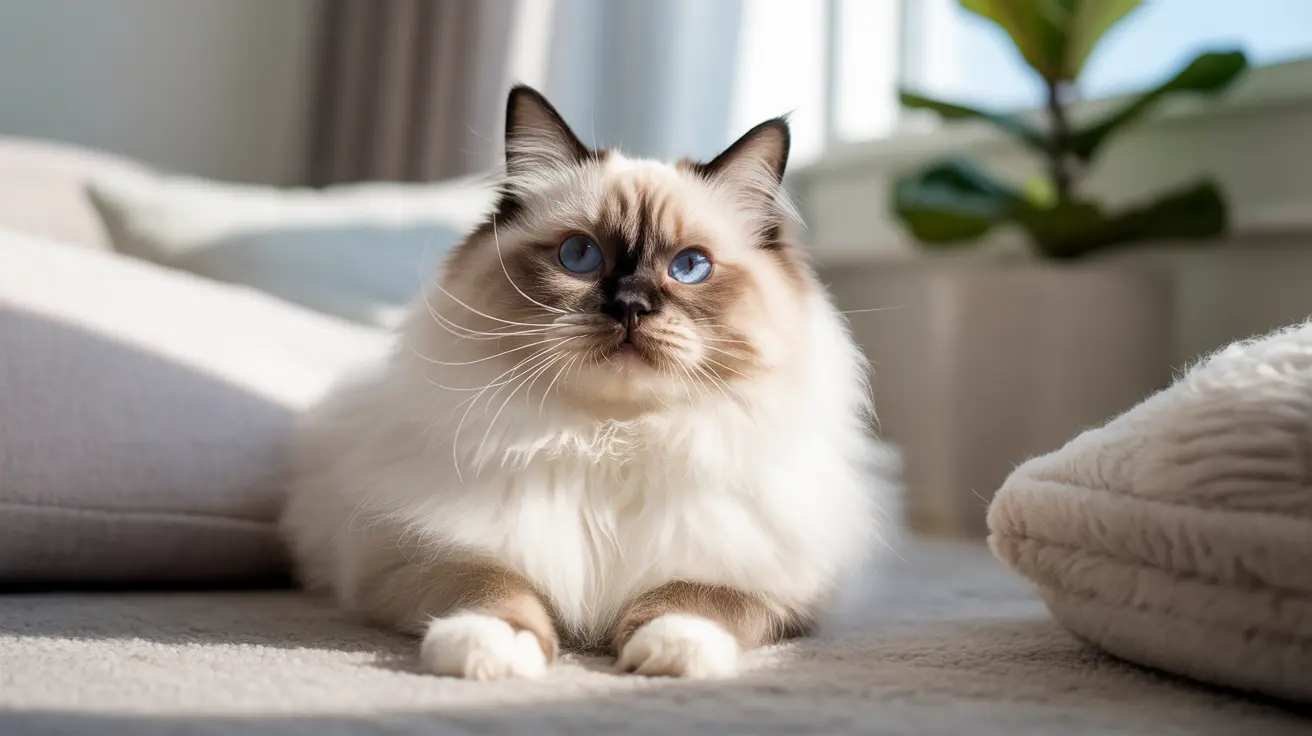How to Give a Cat a Pill Without Stress: Expert Techniques for Worry-Free Medication
Administering medication to cats is one of the most challenging aspects of pet care, even for seasoned veterinarians. Whether your feline friend needs treatment for inflammation, post-surgery care, or routine worming, the struggle to get them to swallow a pill can turn into a stressful ordeal for both cat and owner. The good news is that with the right techniques, patience, and understanding of feline behavior, giving your cat a pill can become a manageable and even stress-free experience.
Learning how to give a cat a pill without stress isn't just about making medication time easier—it's about preserving your bond with your pet while ensuring they receive the medical care they need. This comprehensive guide will walk you through proven methods, from hiding pills in treats to direct administration techniques, helping you find the approach that works best for your unique feline companion.
Understanding Why Cats Resist Taking Pills
Cats are naturally suspicious of anything unfamiliar, and pills trigger multiple sensory alarms that make them instinctively resistant. Unlike dogs, who might gulp down food without much inspection, cats are meticulous about what they consume. They can detect the foreign taste, smell, and texture of medications even when hidden in their favorite foods.
This resistance isn't just stubbornness—it's an evolutionary survival mechanism. In the wild, consuming unknown substances could be dangerous, so cats have developed keen senses to identify and reject anything that seems out of place. Understanding this natural behavior is the first step in developing patience and finding effective strategies for medication administration.
The Food Disguise Method: Making Pills Palatable
The easiest and least stressful way to give your cat a pill is to hide it in a small amount of appealing food. This method works best when your cat is hungry and motivated to eat. The key is using just enough food to mask the pill while ensuring your cat consumes the entire portion.
Effective food options for hiding pills include wet cat food, tuna, or soft treats that can be molded around the medication. Specialized products like Pill Pockets or Greenies Pill Pockets are designed specifically for this purpose, offering flavors like chicken, salmon, or tuna that most cats find irresistible. You can also use small amounts of frozen butter, which can be shaped around the pill and will melt in your cat's mouth.
When using the food disguise method, timing is crucial. Offer the pill-containing treat when your cat is genuinely hungry, but avoid interrupting natural behaviors like eating, drinking, grooming, or using the litter box. Watch your cat carefully during and after eating to ensure the pill is swallowed and not spit out later.
Direct Administration: The Hands-On Approach
When food disguising fails or dietary restrictions prevent its use, direct administration becomes necessary. While this method requires more skill and confidence, it can be highly effective when performed correctly and calmly.
Preparation Steps
Before attempting direct administration, create a safe, quiet environment with minimal distractions. Have the pill ready and easily accessible, and consider lubricating it with butter, gravy from canned food, or a piece of soft treat to ease swallowing. If you're working alone, position your cat in your lap or securely wrap them in a blanket or towel with only their head exposed.
Step-by-Step Direct Administration
Hold the pill between your thumb and index finger of your dominant hand. With your other hand, gently grasp your cat's head from above, placing your thumb on one side of the upper jaw and your fingers on the other side. This grip should be firm but gentle, providing control without causing discomfort.
Tilt your cat's head back slightly, pointing the nose upward until the jaw drops open naturally. Use your little and ring fingers to open the mouth further by gently pressing on the lower lip and front teeth. Quickly place the pill as far back over the tongue as possible—aim for the back one-third of the tongue to stimulate the natural swallowing reflex.
Immediately close your cat's mouth and hold it closed while returning the head to its normal position. Gently rub your cat's nose or throat, or blow lightly on their nose to encourage swallowing. A successful swallow is often indicated by your cat licking their nose. Follow up by offering a small amount of water via syringe or something tasty like tuna juice to ensure the pill goes down completely.
Using Pet Piller Devices for Easier Administration
Pet pillers are small plastic tubes with plungers designed to place pills at the back of your cat's mouth safely and quickly. These devices can be particularly helpful for cat owners who struggle with hand coordination during direct administration or those dealing with cats who bite.
To use a pet piller effectively, load the pill into the device according to the manufacturer's instructions. Follow the same head positioning techniques as direct administration, but use the piller to deposit the pill at the back of the tongue before activating the plunger. This method often feels less invasive to cats and can reduce the risk of being bitten while maintaining accuracy in pill placement.
The Towel Wrap Technique for Difficult Cats
Some cats become aggressive or extremely fearful during medication time, making safe handling a priority. The towel wrap or "burrito" technique can protect both you and your cat while facilitating pill administration.
Lay a large towel flat and place your cat in the center. Wrap the towel snugly around your cat's body, leaving only the head exposed. This technique, sometimes called "purrito-ing," provides security for anxious cats while preventing scratching and allowing you to focus solely on pill administration. Ensure the wrap is snug but not restrictive, allowing your cat to breathe comfortably.
Alternative Medication Forms When Pills Fail
If traditional pill administration proves consistently unsuccessful or causes excessive stress, discuss alternatives with your veterinarian. Many medications can be compounded into flavored liquids with appealing tastes like tuna, chicken, or salmon. Veterinary pharmacies specialize in creating these custom formulations to match your cat's preferences.
Other alternatives include transdermal gels that absorb through the skin, injectable medications, or medicated pastes that can be applied to your cat's fur for self-grooming removal. Some medications are available as spot-on treatments similar to flea preventatives, eliminating the need for oral administration entirely.
Building Positive Associations Through Training
Long-term success in medication administration often comes from building positive associations with handling and medical procedures. Start by practicing gentle mouth handling during calm, pleasant times, rewarding your cat with treats and praise for cooperation.
Use pill dummies—small, harmless treats shaped like pills—to practice the administration process without the stress of actual medication. Establish consistent hand signals and reward systems that help your cat understand and accept the routine. This medical training approach is particularly effective when started with kittens but can be successful with adult cats given patience and consistency.
Safety Considerations and When to Seek Help
Safety should always be your top priority during medication administration. Ensure your cat is up-to-date on vaccinations, and consider wearing gloves if your cat tends to scratch. Watch your cat's body language carefully, providing breaks when you notice signs of excessive stress or aggression.
Never force medication aggressively, as this can cause injury to both you and your cat while creating lasting negative associations with handling. If your cat becomes extremely distressed or if you're unable to safely administer medication after several attempts, contact your veterinarian immediately to discuss alternative options.
Creating Long-Term Success
Consistency and patience are key to long-term success in stress-free pill administration. Always provide positive reinforcement immediately after successful medication giving, whether through treats, brushing, petting, or playtime. This positive association helps your cat learn that medication time leads to pleasant experiences.
Remember that some cats naturally adapt more quickly than others. Senior cats may require gentler handling and more time, while younger cats might respond better to food-based methods. The goal is finding the technique that works best for your individual cat while maintaining their trust and minimizing stress for everyone involved.
Frequently Asked Questions
- Q: How do I know if my cat has actually swallowed the pill?
Watch for your cat to lick their nose, which is a natural response after swallowing. You can also gently rub their throat or blow lightly on their nose to stimulate swallowing. Offering a small amount of water or tuna juice afterward helps ensure the pill goes down completely.
- Q: Can I crush pills to make them easier to give?
Never crush pills unless specifically advised by your veterinarian. Crushing can alter the medication's effectiveness, create a bitter taste that makes administration more difficult, and in some cases, can be dangerous if the medication has a special coating designed for slow release.
- Q: What should I do if my cat spits out the pill repeatedly?
If food disguising fails and your cat consistently spits out pills, try the direct administration method or ask your veterinarian about alternative formulations like flavored liquids, transdermal gels, or injectable options.
- Q: Is it safe to use the towel wrap method for all cats?
The towel wrap method is generally safe when done properly, but monitor your cat for signs of distress. Ensure the wrap isn't too tight and allows comfortable breathing. Some cats find the wrap comforting, while others may become more stressed, so adjust your approach based on your cat's response.
- Q: How can I make pill time less stressful for an anxious cat?
Create a calm environment, work at your cat's pace, and always provide positive reinforcement after successful administration. Consider practicing gentle handling during relaxed times to build positive associations, and speak to your vet about anti-anxiety options if stress levels remain high.
- Q: What foods are safe to use for hiding pills?
Safe options include small amounts of wet cat food, tuna, Pill Pockets, or frozen butter. Avoid foods that are toxic to cats, such as those containing garlic, onion, or chocolate. Always use small portions to ensure your cat eats the entire pill-containing treat.
- Q: When should I seek professional help for medication administration?
Contact your veterinarian if medication administration consistently causes extreme stress, if you're unable to safely handle your cat, or if you're concerned about injury to yourself or your pet. Many vets can demonstrate techniques or suggest alternative medication forms that may work better for your situation.
Conclusion
Learning how to give a cat a pill without stress is a valuable skill that benefits both you and your feline companion. Whether you choose food disguising, direct administration, or alternative medication forms, the key is finding an approach that works for your cat's personality and medical needs. Remember that patience, consistency, and positive reinforcement are your most powerful tools in creating a stress-free medication routine.
With practice and the right techniques, pill time can transform from a dreaded chore into a manageable part of your cat's healthcare routine. Don't hesitate to work with your veterinarian to explore different options and find the method that ensures your cat receives necessary medications while preserving the trust and bond you share.






